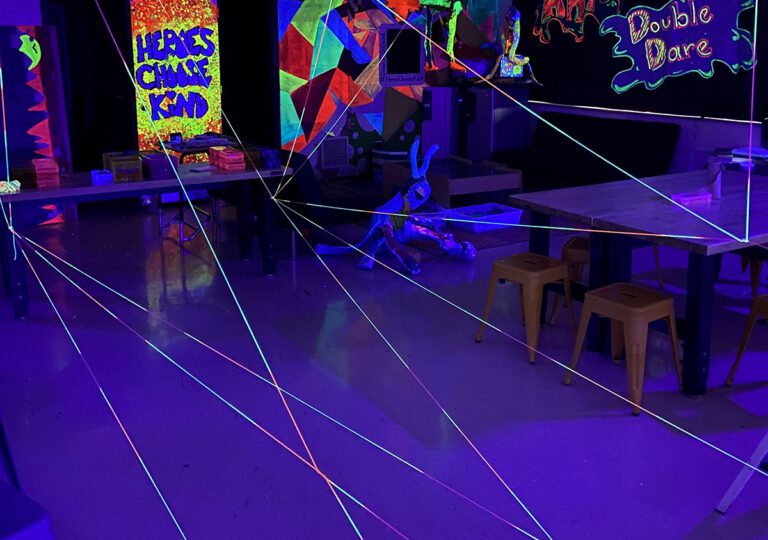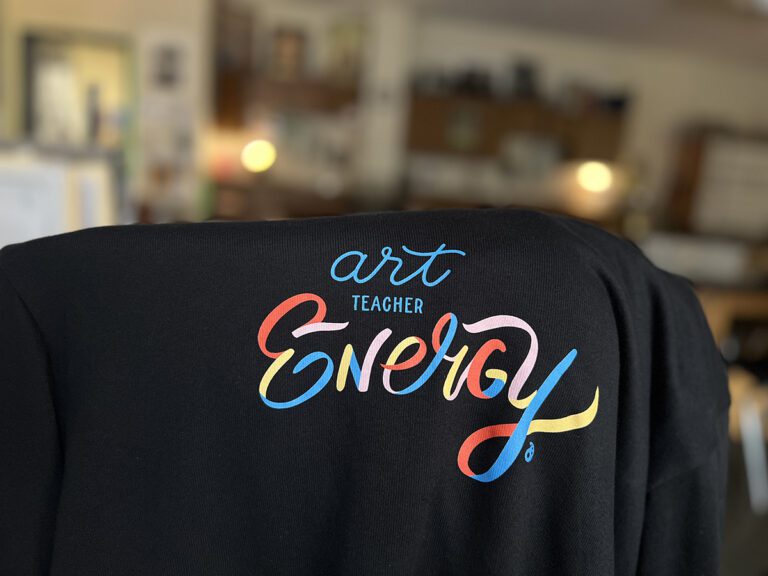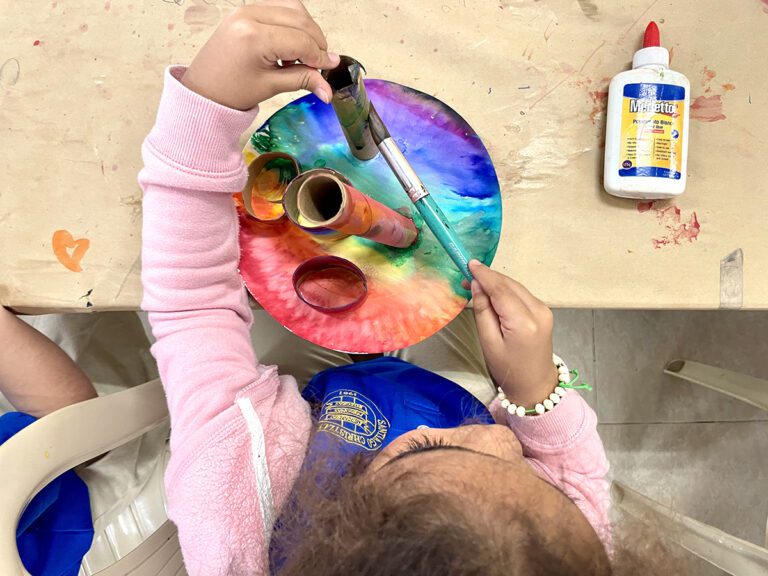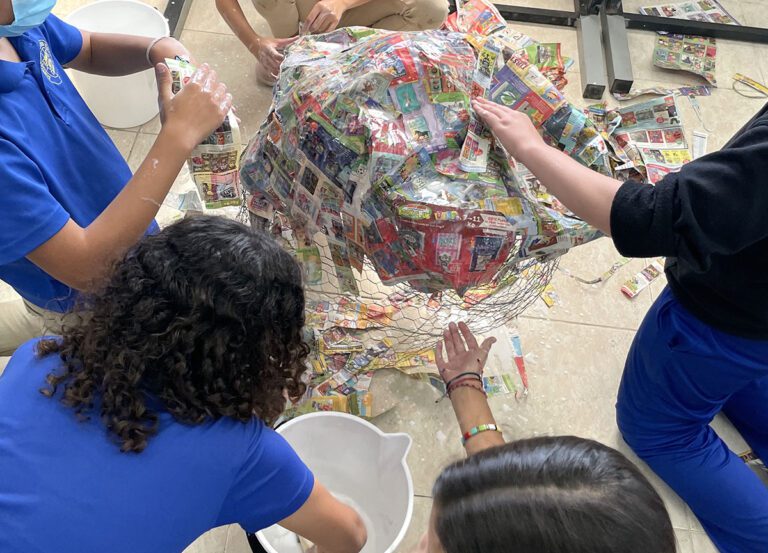As art teachers, we have all experienced extra unplanned class time. Maybe a demo goes more quickly than expected, technology fails, and you can’t play the video clip you had planned, or your students finally figure out that cleanup routine. Whatever the case, you have a few minutes to fill, and you want to make them count!
Here are my 3 favorite activities to productively use 5 spare minutes in the art room.
1. “4 Corners”
My first encounter with this game was at a roller rink in middle school, and I still love it today. The premise is simple. You call out a question, and the class divides itself into the four corners of the room depending on their response. It’s kinesthetic, it’s academic, and it guarantees 100% participation.
The set up for this game is quick, easy, and lasts all year. Start by making signs for the four corners of your room. Labels them 1-4 or A-D. However you like! You can even add additional signs to accommodate other types of questions (True/False, Thumbs Up/Thumbs Down, etc.) Tape your finished signs to the walls or hang them from the ceiling.
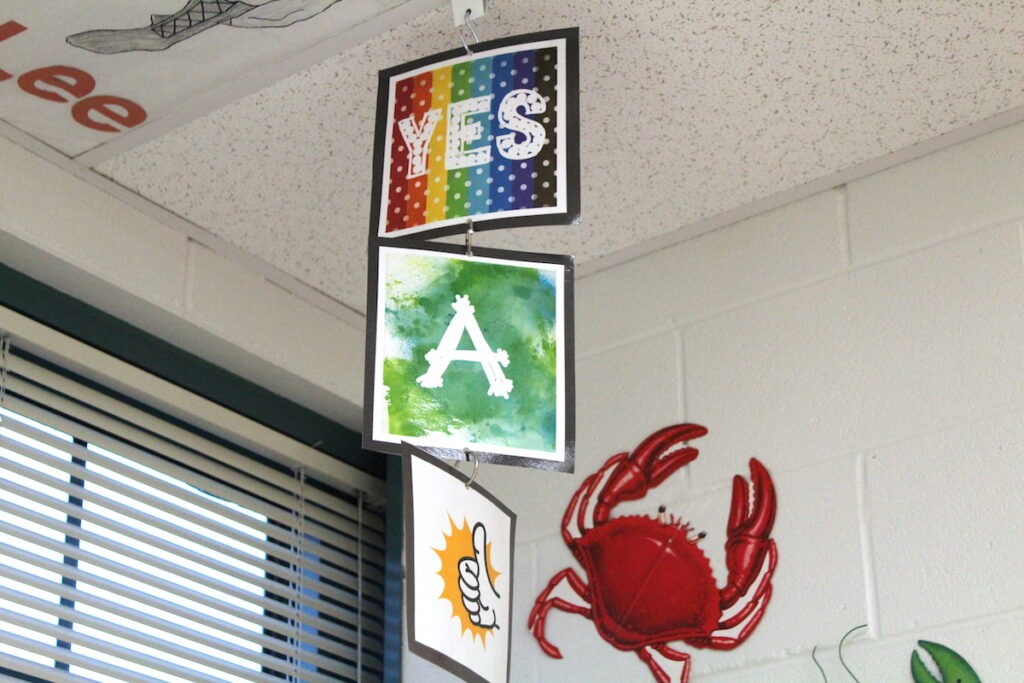
Then, think about the questions you will ask. You could pre-write the questions to fit your curriculum, or just use your instinctual teacher questioning methods on the fly. Start with a few fact-based questions related to your learning objectives. Then, advance to asking for opinions, perhaps to critique an image or an idea.
Here are 3 examples of fact-based questions with some potential choices.
- Question: Which type of line is this? (Draw a line on the board.)
Choices: Vertical, Horizontal, Diagonal, Wavy - Question: Where is Adinkra Cloth traditionally made?
Choices: Asia, Africa, Europe, Central America - Question: What style of art is this?
Choices: Realistic, Non-Objective, Abstract, Not Sure
Once students have had some practice with the game, you can move onto opinion questions. There are many approaches you can take. One idea is to show 4 different images with the same subject matter portrayed in 4 diverse styles. Then, ask students to choose which artwork they like best. This usually opens up a dynamic debate. You can even have students try to convince one another to change their votes.
Another idea is to limit the choices to “yes,” “no,” and “maybe” and then ask a controversial question.
Here are a few examples:
- Should American museums display art removed from Egypt?
- Should offensive art be displayed in schools?
- Does one person have the right to own a famous masterpiece or should it belong to a public institution?
- If your friend gives you an idea and you use it for your art, is it still your work?
As you play, if there is a “right” answer to a question, any students who choose that answer get to keep playing while everyone else must return to their seats. If it’s an opinion question, then the whole class plays for the entire time as no answer is ultimately “correct.” Feel free to pause for a lively discussion or debate!
2. “Fix 3 Things”
Once, during a particularly messy day in the art room, I was lamenting my current state of disorganization to a co-worker. ”It’s okay, Lindsey, “ he said, “Nobody ever trusts a skinny cook or an art teacher with a clean room.” Although his words made me chuckle and warmed my heart, I still admit to feeling more level-headed when my room is at least semi-clean.
“Fix 3 Things” is a quick activity to help cut the clutter and promote student responsibility.
Here is how it works. When you find yourself with five extra minutes, instruct your students to individually and independently find three things to “fix” in your art room. They could pick scrap paper up off of the floor and put it in the recycle bin. They could sharpen pencils for the next class. They could sort sketchbooks or any other organizational task. Permit them to seek out any odd jobs that need to be done!
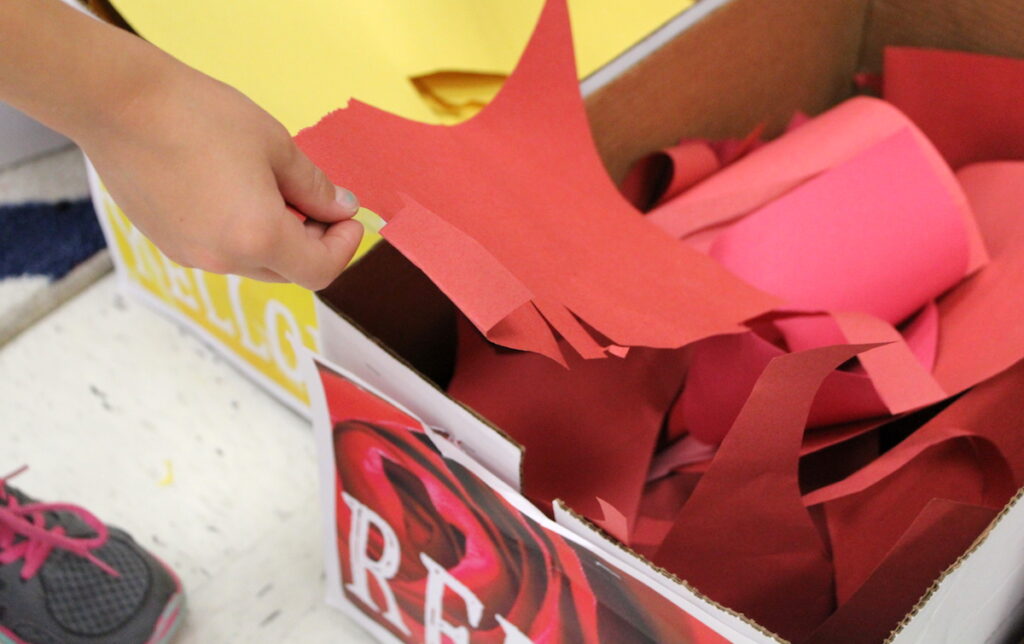
To add an extra incentive, you can pre-determine a “secret mission,” and write it on a folded slip of paper. If someone in the class happens to complete it, the whole group receives a reward. In those cases, I like to give extra points toward my classroom management system.
This activity has value beyond preserving your sanity. Caring for art materials and artmaking spaces is a valuable skill and part of the process of making art. Additionally, your students learn to take ownership over the state of their art studio.
3. Art “I Spy”
“I Spy” is a classic game, but it can also be a powerful formative assessment tool. If you aren’t familiar with this simple childhood game, the caller announces, “I spy with my little eye, something (insert color here).” Then, everyone has to guess what the caller has in mind.
The next time you have five extra minutes, expand the game to use any term you have been studying.
For example, you might say things like:
- I spy with my little eye something symmetrical.
- I spy with my little eye something that has complimentary colors.
- I spy with my little eye, a printmaking tool.
As students strive to guess which item in the classroom you have chosen, you can gauge understanding. If the guesses are consistent with the new learning, you can feel confident in their knowledge. However, if the student guesses do not reflect accurate understandings, you can plan to reteach in the next class period.
In addition to formatively assessing your students, this game also demonstrates directly how art learning translates to the real world. Playing “I Spy” can prove your curriculum’s relevance.
So, the next time you have several extra minutes, switch up your regular classroom routine to add a valuable activity to your instructional sequence!
What is your favorite way to use five extra minutes?
What other games do your students enjoy in the art room?
Magazine articles and podcasts are opinions of professional education contributors and do not necessarily represent the position of the Art of Education University (AOEU) or its academic offerings. Contributors use terms in the way they are most often talked about in the scope of their educational experiences.


